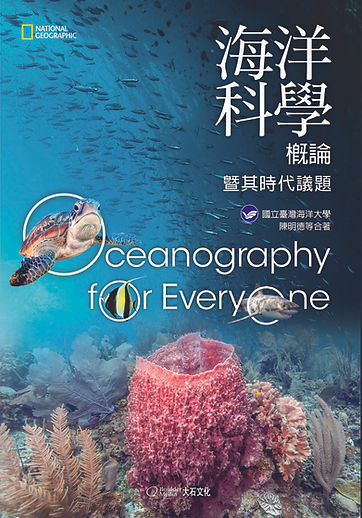

海洋科普教育專題
Marine Popular Science Education Seminar
Class: Graduate Institute of Education 1A
Class code:M9A0127U
Class time:2nd semester
Learning purpose
-
Understand the concept of marine popular science.
-
Understand the research of marine popular science.
-
Learn how to do the research of marine popular science.
-
Learn how to apply marine popular science into your teaching filed.
About Marine Science
本課程關�注海洋物理丶化學、地質丶生物丶水下考古、氣象及漁業等領域,選擇古今中外的案例,結合台灣海洋研究的新數據丶法規和現况,讓學生認識海洋科學的相關議題與發展應用。在內容方面跳脫一般海洋專業書籍文獻引用的束縛,將冷僻專業的海洋科學名詞與艱深的數理公式,以平易暢達的詞句進行敘述,讓有興趣的讀者能清楚瞭解海洋科學原理及其重要性。
Teaching materials
-
Schlenkcr, R. M. (1977). An introduction to marine education, a course for preservice science teachers, Maine: University of Maine.
-
Stepath, C. M. (2007) Marine Education: Learning Evaluations. The Journal of Marine Education-Current. 23(2), 45-51.
-
Lambert, J. (2006). High School Marine Science and Scientific Literacy: The promise of an integrated science course. International Journal of Science Education. 28(6), 633–654.
-
Zeppel, H. (2008). Education and Conservation Benefits of Marine Wildlife Tours: Developing Free-Choice Learning Experiences. The Journal of Environment Education, 39(3), 3-17.
-
Horton, P. B. et al. (1993). An investigation of the Effectiveness of Concept Mapping as an instructional Tool. Science Education 77(1), 95-111.
-
Ainley, M., Corrigan, M., and Richardson N. (2005). Students, tasks and emotions: Identifying the contribution of emotions to students’ reading of popular culture and popular science texts. Learning and Instruction, 15 (2005) 433-447.
-
Sadler, T. D. (2009). Situated learning in science education: socio‐scientific issues as contexts for practice. Studies in Science Education. 45(1), 1-42.
-
Lambert, J. (2005).Students' Conceptual Understandings of Science After Participating in a High School Marine Science Course, Journal of Geoscienc Education, 53(5), 531-539
-
Nisbet, M. C. et al. (2002). Knowledge, Reservations, or Promise? A Media Effects Model for Public Perceptions of Science and Technology. Communication Research, 29(5), 584-608.
-
Stinner, A. et al. (2003). The Renewal of Case Studies in Science Education. Science & Education, 12, 617–643.
-
Stocklmayer, S. and Rennie, L. and Gilbert, J. (2010). The roles of the formal and informal sectors in the provision of effective science education. Studies in Science Education. 46 (1), 1-44.
-
McDonnell, J. D. (2001). Best Practices in Marine and Coastal Science Education: Lessons Learned from a National Estuarine Research Reserve. Marine and Coastal Education, 173-182.












